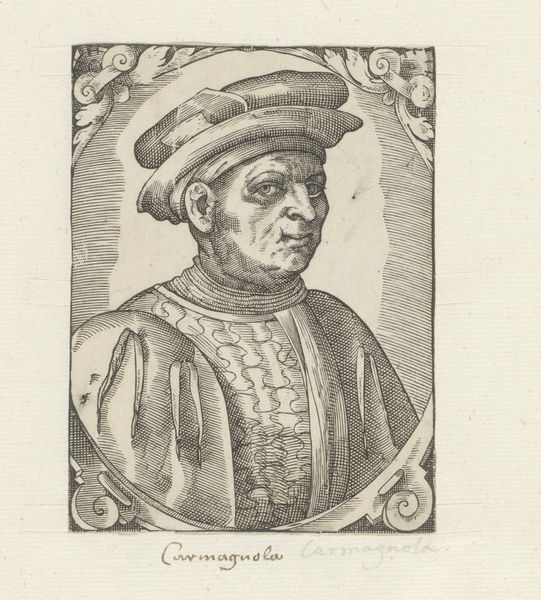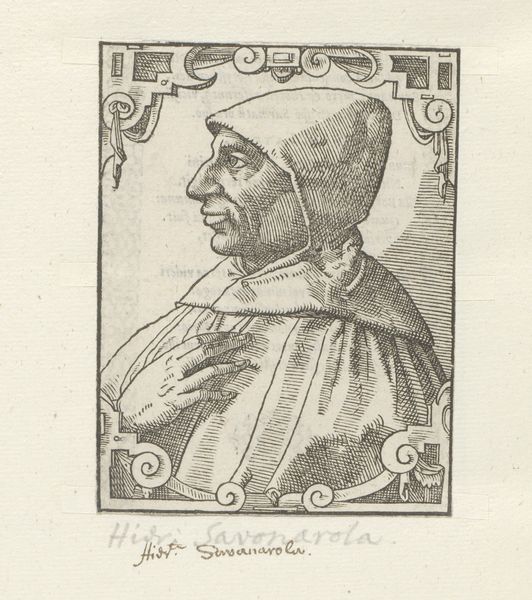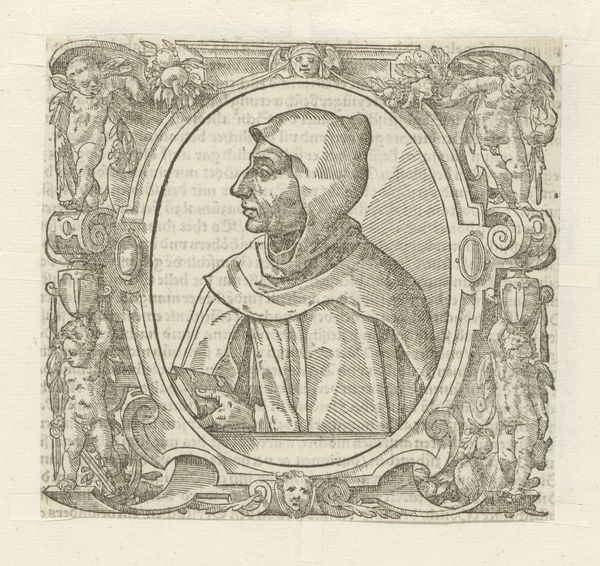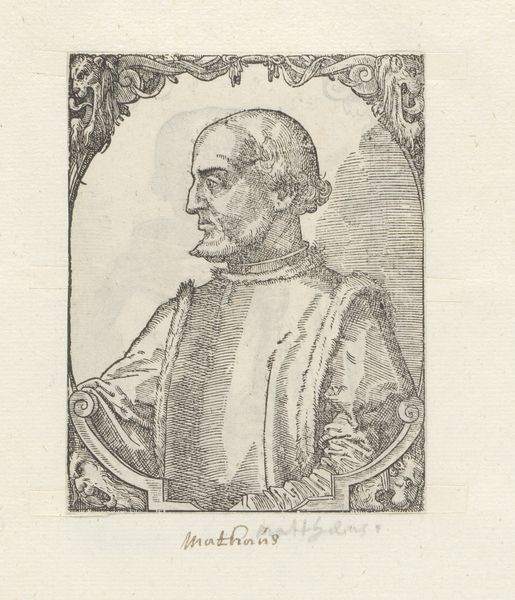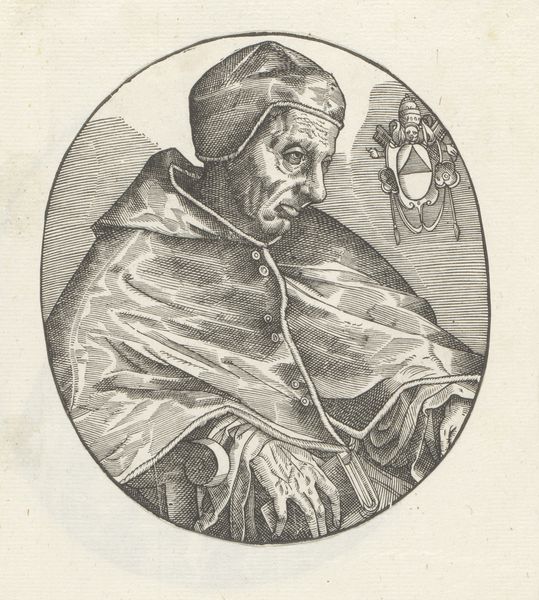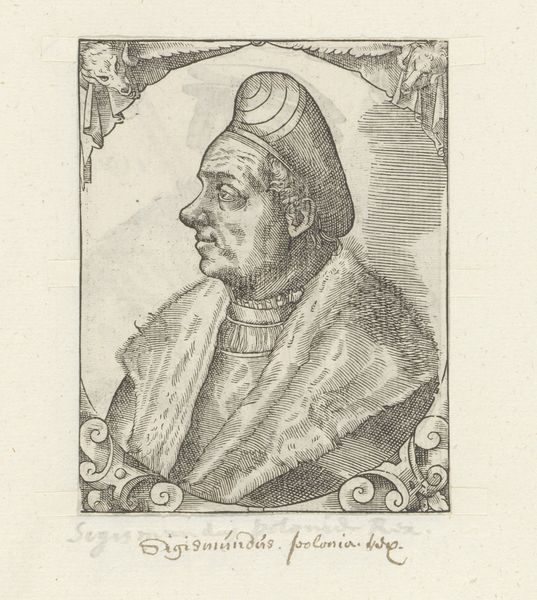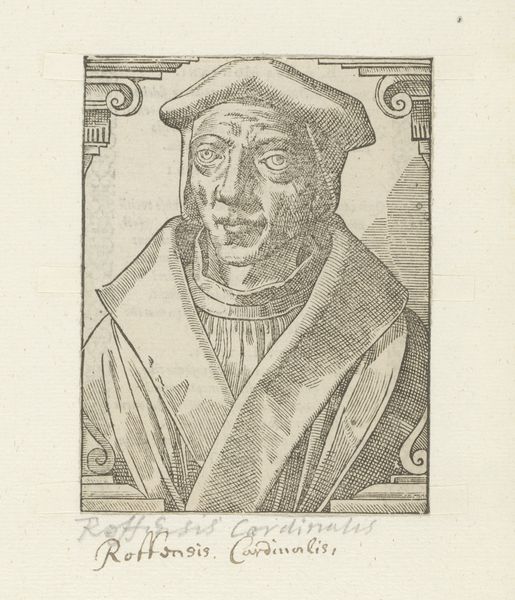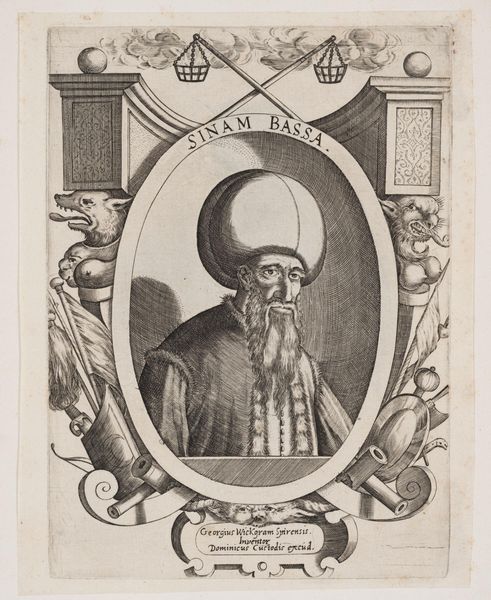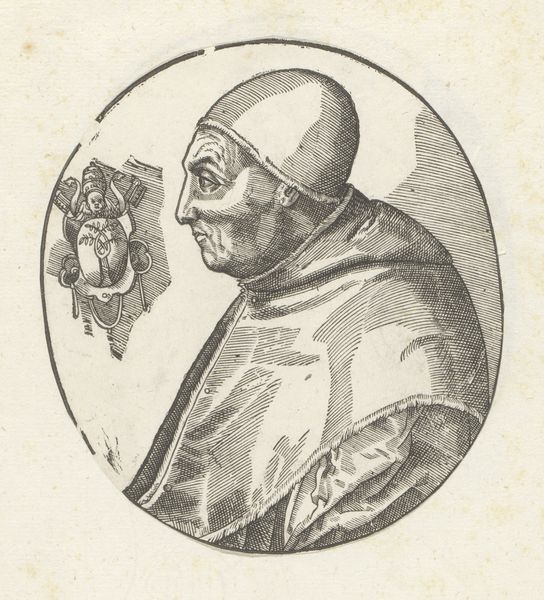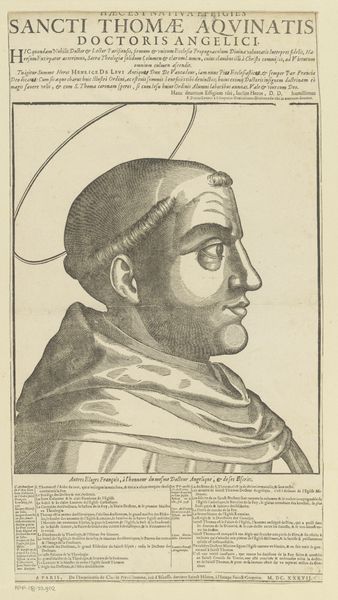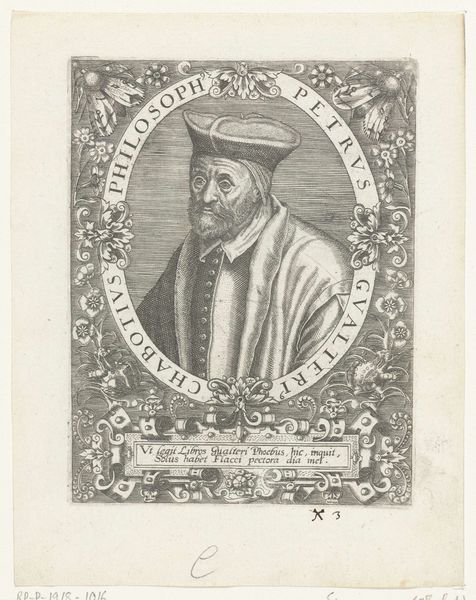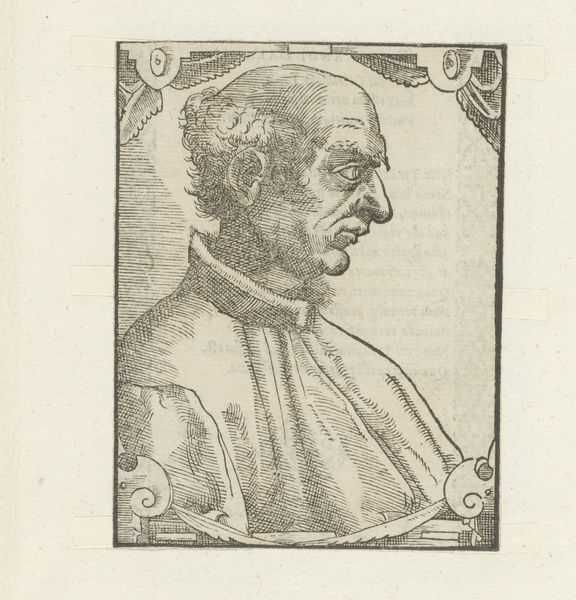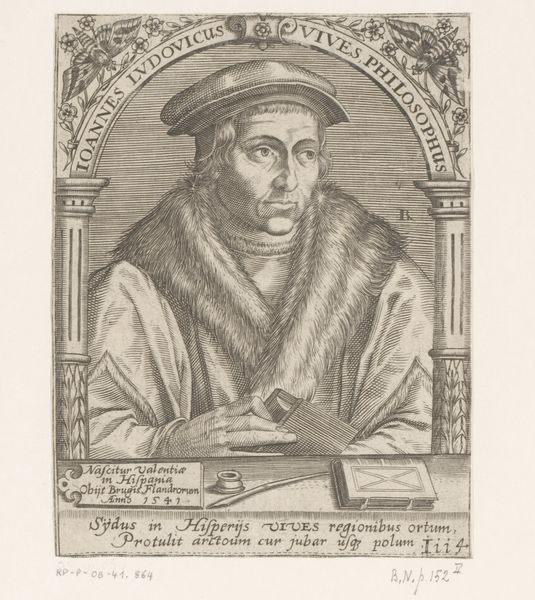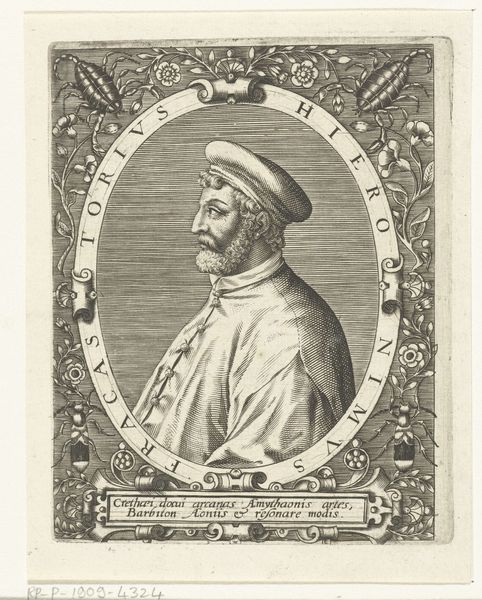
print, engraving
#
portrait
# print
#
figuration
#
form
#
line
#
academic-art
#
italian-renaissance
#
engraving
Dimensions: height 109 mm, width 83 mm
Copyright: Rijks Museum: Open Domain
Curator: The engraving we’re looking at is a portrait of Cosimo de' Medici, dating roughly from 1549 to 1575. Editor: It's austere, even imposing. The fine lines of the engraving capture every contour of his face, that formidable nose...it all speaks to power and perhaps a touch of severity. Curator: Indeed. Remember Cosimo de’ Medici's rise; consolidating power in Florence wasn't about popular appeal. This print, most likely created after his death, cements his image within a very specific political and social narrative. It shows a ruler, resolute and unyielding, a representation of lineage, not personality. Editor: I agree, yet the detail suggests more than just cold power. Look at the way his garment drapes and the texture of his hat – these elements present the complexities within Medici's identity. There’s an implicit awareness of status and constructed masculinity woven into this image. Curator: Absolutely. This portrait operates as a cultural artifact. It uses the visual language available during the Renaissance to assert dominance. Consider how these kinds of images functioned in the period, solidifying dynastic claims within a society deeply concerned with lineage and representation. The decorative frame further reinforces status. Editor: And considering the broader cultural impact, the image reinforces certain norms. Who gets remembered? Who is allowed to be portrayed? What are the visual markers of importance? Even something that seems formal reinforces those pre-existing cultural biases, doesn’t it? Curator: Precisely! This artwork demonstrates how image making operates as part of wider socio-political mechanisms of the time. By examining its symbolism and context, we start to question who wields the power to shape perceptions of leadership. Editor: Ultimately, the portrait's power lies in its crafted performance of identity, serving as an artifact worthy of consideration today for how power still operates via imagery. Curator: Yes, analyzing portraits such as this allows for deep insight regarding how history, memory, and image-making are entangled.
Comments
No comments
Be the first to comment and join the conversation on the ultimate creative platform.
